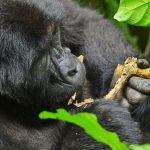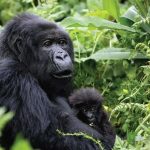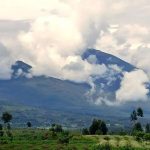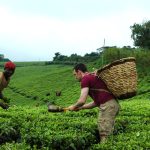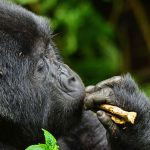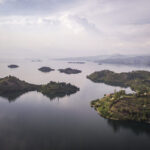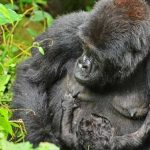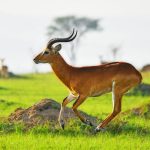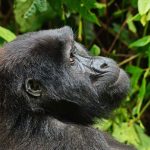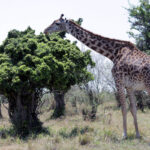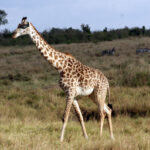What is the Best Time to Visit the Masai Mara National Reserve?
What is the Best Time to Visit the Masai Mara National Reserve? The Masai Mara National Reserve is one of the world’s most renowned wildlife destinations, offering unparalleled opportunities for wildlife viewing, cultural experiences, and breathtaking landscapes. As with any prime travel destination, the timing of your visit can greatly influence the experience. The best time to visit the Masai Mara depends on several factors, such as the type of wildlife you want to see, your climate preferences, and whether you want to witness the famous Great Wildebeest Migration. In this detailed guide, we will explore the various seasons and the specific timeframes when the Masai Mara offers the most memorable experiences.
The Seasons of the Masai Mara
The Masai Mara National Reserve experiences two main seasons: the wet season and the dry season. Each of these seasons offers distinct advantages and challenges for visitors, so understanding them is crucial for planning the best time to visit.
The Dry Season (June to October)
The dry season in the Masai Mara spans from June to October and is often considered the best time to visit for many travelers. During this period, the weather is generally warm and sunny, with little to no rainfall. The dry season brings several advantages for wildlife viewing and outdoor activities:
Wildlife Visibility
The dry season is ideal for game viewing, as the scarcity of water forces animals to congregate around the remaining water sources, such as the Mara River and its tributaries. The reduced vegetation due to lack of rain also means that animals are easier to spot, making this period an excellent time for safaris.
The Great Wildebeest Migration
Perhaps the most famous wildlife event in the Masai Mara is the Great Wildebeest Migration, which occurs during the dry season, typically between July and October. During this time, over 1.5 million wildebeests, along with hundreds of thousands of zebras and gazelles, moved from the Serengeti National Park in Tanzania to the Masai Mara in search of fresh grazing. Witnessing the migration, particularly the dramatic river crossings of the wildebeests, is a once-in-a-lifetime experience for many visitors. This event attracts both tourists and predators, such as lions and crocodiles, making it a thrilling spectacle.
Best Safari Experience
The dry season is also the prime time for photography and wildlife safaris. With clearer skies, better visibility, and predictable animal movements, travelers are more likely to get close-up views of the region’s iconic wildlife. Additionally, the Mara’s roads and trails are more accessible during this time, as they are less likely to be affected by the rain.
However, it’s important to note that because this is peak season, the Masai Mara can become crowded with tourists, especially during the height of the migration. Safari lodges and camps can also be more expensive, so booking in advance is highly recommended.
The Wet Season (November to May)
The wet season in the Masai Mara occurs between November and May, with the heaviest rainfall typically from March to May. While this period has fewer tourists, it can offer unique advantages and a different experience for those who choose to visit during this time.
Lush Green Landscape
One of the main attractions of visiting during the wet season is the transformation of the landscape. The heavy rains cause the vegetation to flourish, turning the reserve into a lush, green paradise. This is an ideal time for visitors who appreciate vibrant landscapes and the beauty of the Mara in its full bloom.
Fewer Tourists and Lower Costs
The wet season is the off-peak period for tourism in the Masai Mara, meaning that you can enjoy a more peaceful and serene experience with fewer crowds. Because it is considered the low season, accommodation prices are also generally lower, making this a more budget-friendly time to visit. For those who prefer more privacy and a more intimate safari experience, visiting during the wet season can be a great option.
Bird Watching
The wet season is the best time for bird watchers. The lush environment supports a wide variety of bird species, many of which migrate to the Mara during this time. The skies are filled with vibrant species such as sunbirds, hornbills, and marabou storks. For nature enthusiasts interested in avian life, the wet season offers some of the best opportunities for bird-watching in the region.
Wildlife Activity
Although the wet season does bring challenges, such as muddier roads and some areas being harder to access, it still provides excellent wildlife viewing opportunities. Many animals, such as lions and leopards, remain active throughout the year, and the wet season sees the birth of many calves, including wildebeest, zebras, and antelope. This results in an influx of young animals, making it an exciting time for predators and an interesting time for visitors to observe animal interactions.
However, the downside to visiting during the wet season is that some roads may become impassable, and rain showers can disrupt outdoor activities. Safaris may also be less predictable, as animals tend to be more dispersed due to the availability of water throughout the reserve.
Specific Months to Visit the Masai Mara
Now that we’ve covered the general seasons, let’s explore the best specific months to visit the Masai Mara based on weather, wildlife events, and overall experience:
June to September (Peak Season)
These months offer some of the best opportunities for witnessing the Great Wildebeest Migration, especially the dramatic river crossings. The weather is dry and pleasant, with minimal rainfall, providing ideal conditions for safaris. However, this is also when the reserve can be crowded, and prices for lodges and camps are at their highest.
October and November (Shoulder Season)
October is an excellent time for those who want to experience the end of the migration with fewer tourists. The grasslands are still relatively dry, and wildlife is still abundant, making it a great time for safaris. November marks the beginning of the wet season, but the rains usually don’t become heavy until later in the month, so early November can still offer good conditions for travel.
December to February (Short Dry Season)
This is a quieter period between the two rainy seasons. The weather is warm and dry, and although the migration has largely moved southward, the reserve still offers good wildlife viewing. This is a fantastic time for tourists who prefer a peaceful environment with moderate crowds. Wildlife is often concentrated around the few remaining water sources, providing ample opportunities for sightings.
March to May (Low Season)
While this is the wettest period of the year, it is also a time of significant wildlife births, particularly among antelopes and zebras. The landscape is lush and green, offering stunning views for those willing to brave the rainy weather. This time also provides the opportunity for bird watchers to see a variety of migrant species. Although the wet season brings challenges, it’s ideal for those seeking solitude and lower costs.
Conclusion
The best time to visit the Masai Mara National Reserve ultimately depends on your preferences. If you’re seeking the world-renowned spectacle of the Great Wildebeest Migration, the dry season from July to October is unbeatable. However, for those looking for a quieter, more budget-friendly safari with lush landscapes and fewer tourists, the wet season from November to May can offer a unique and rewarding experience. Regardless of when you visit, the Masai Mara promises an unforgettable adventure in one of the most biodiverse regions on the planet.
Popular East Africa Safari Packages
- Gorilla Trekking & Masai Mara Safari – 8 Days
- Murchison Falls Luxury Wildlife Safari – 4 Days
- Ultimate Uganda Luxury Safari – 14 Days
- Uganda Wildlife Safari & Activity Holiday – 15 Days
- Wildlife & Primates Safari in Uganda – 9 Days
- 3 Days Rwanda Gorilla Trekking Safari
- Best of Rwanda Budget Safari – 6 Days
- Uganda & Rwanda Activity Holiday – 8 Days
- Uganda & Rwanda Wildlife Holiday – 20 Days.
- 4 Days Gorilla & Chimp Tracking Safari
- Classic Rwanda Safari – 10 Days
- Wildlife & Gorilla Trekking Holiday – 9 Day
- Group Adventure Holiday – 7 Days
- Uganda Wildlife Holiday – 8 Days
- Luxury Gorilla Tracking Safari By Road – 4 Days
- All-Inclusive Uganda Family Safari – 12 Days.
- Ngorongoro Crater & Lake Manyara Safari – 4 Days
- Eastern Uganda Safari Trail – 12 Days
- Grand East Africa Safari – 20 Days. Uganda, Kenya & Tanzania
- A Glimpse of Kenya Wildlife Safari – 5 Days

